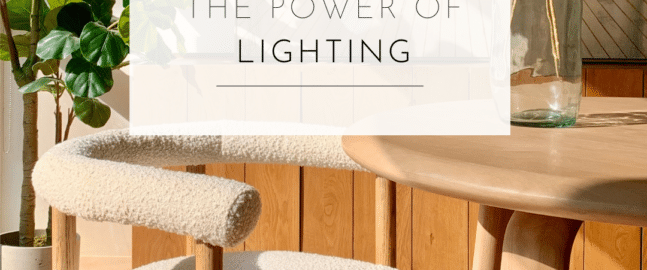When it comes to real estate staging, every element matters. From furniture placement to colour palettes, each aspect contributes to creating an inviting atmosphere that can make potential buyers feel at home. However, one often underestimated yet crucial element in this process is lighting.
Lighting in staging has the unique ability to transform a space, highlight key features, and evoke emotions, making it a critical tool for real estate agents, home sellers, and interior designers alike.
Why Lighting in Staging Matters
1. Enhancing Perception of Space
Good lighting can make a room appear larger and more open. Bright, well-distributed light eliminates shadows and highlights architectural details, allowing buyers to see the full potential of the space. In contrast, poor lighting can make a room feel cramped and uninviting, potentially turning off prospective buyers.
2. Setting the Mood and Ambiance
Lighting plays a significant role in setting the tone of a home. Soft, warm lighting can create a cozy and welcoming atmosphere in living and dining areas, while bright, focused lighting can be used to emphasize functional spaces like kitchens and offices. By strategically using different types of lighting, real estate professionals can craft an emotional narrative that resonates with buyers.
3. Highlighting Features and Selling Points
A well-lit home showcases its best features effortlessly. Whether it’s a stunning piece of artwork, a beautifully designed kitchen, or an architectural focal point like a fireplace, the right lighting will draw attention to these highlights. Accent lighting, such as track lights or under-cabinet fixtures, is particularly effective in spotlighting these areas and enhancing their appeal.
4. Creating a Sense of Continuity
Lighting helps create a sense of flow and continuity throughout a property. By maintaining a consistent lighting scheme, you guide potential buyers through the space naturally, making it easier for them to envision living in the home. Consistency in lighting also ensures that no area feels disconnected or out of place.
Tips for Effective Lighting in Staging
- Layer Your Lighting: Use a mix of ambient, task, and accent lighting to create depth and dimension. This layered approach allows for flexibility and enhances the visual interest of the space.
- Choose the Right Bulbs: Opt for bulbs that emit a soft, white light to create a welcoming environment. 3000-3500K is the ideal colour temperature.
- Maximize Natural Light: Whenever possible, leverage natural light to brighten the space. Open curtains and blinds to allow sunlight to pour in, making rooms feel airy and vibrant.
- Highlight with Dimmers: Install dimmer switches to adjust lighting levels according to different times of day and activities, giving you greater control over the ambiance.
Ready to Harness the Power of Lighting in Staging?
Lighting is more than just a functional necessity in real estate staging—it’s a strategic tool that can significantly impact a buyer’s perception and decision-making process. By understanding and utilizing the power of lighting, real estate agents, home sellers, and interior designers can enhance a property’s appeal, creating a captivating and memorable experience for potential buyers.
Ready to transform your property with the right lighting strategy?
Experience the Lux Difference
At Lux Furniture Rentals, we don’t believe in sacrificing quality. Lux rental items are selected by designers, for designers. Established by an agent and stager duo, Lux meticulously curates luxurious furniture and decor. Using luxurious high-end furniture allows potential buyers to immerse themselves in your perfectly designed space. Cost cutting and using discounted furniture and decor ensures a room looks inviting, whereas renting from Lux captures buyers minds and turns your staged space into their next home. So, before starting your next staging job, connect with Lux Furniture Rentals and discover the Lux difference.


